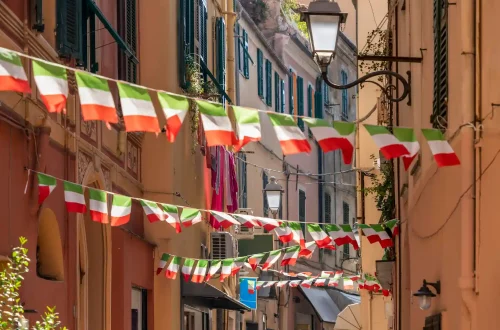Unfortunately, after the enactment of Decree-Law 36/2025, it is not possible to apply for Italian citizenship through an Italian great grandparent.
For several years now, Italy has approved the right of citizenship by the principle of Jus Sanguinis or “right of blood”. As of 2025, this means that an individual must have an Italian parent or grandparent born in Italy to qualify.
Alternatively, eligibility may apply if one’s Italian parent—not grandparent—resided continuously in Italy for at least two years. In both cases, it is essential that the Italian ancestor held exclusive Italian citizenship at the time of their death.
Jure Sanguinis or “right for blood”
For several years now, Italy has approved the right of citizenship by the principle of Jure Sanguinis or “right of blood”.
This right implies that any Italian descendant, no matter where they were born, has the right to apply for dual Italian citizenship as long as they can demonstrate an uninterrupted connection with Italy.
Take advantage of specialized assistance to secure your passport for a borderless future.
How to apply for Italian citizenship by Jure Sanguinis?
As of 2025, with the enactment of Law No. 74/2025, Italian consulates and municipalities have ceased accepting applications for citizenship by descent. All administrative procedures are set to be centralized under a newly established governmental body; however, its structure, operational framework, and specific guidelines are still pending.
As a result, all existing consular and communal queues were formally dissolved, leaving judicial proceedings as the only available pathway to obtaining Italian citizenship. Applicants who intend to challenge Law 74/2025 are strongly advised to retain documentation—such as a receipt or proof of their original place in line at a consulate—as part of their legal strategy.
It is important to emphasize that the outcome of these legal challenges remains uncertain, as Italian courts continue to evaluate the constitutionality and retroactive implications of the law.
How do I prove my Italian bloodline?
In order to demonstrate the Italian authorities of your blood right, you need to present a series of legal documents that tells your family story:
- Birth certificates: starting from your first Italian ancestry, to all the family members until you were born.
- Marriage certificates: to explain family unions.
- Death certificates: to anyone who applies.
- No Naturalization certificate: maybe the most important one. Which demonstrates that your italian ancestor did not resign to their nationality once they arrived in their new country.
- Receipt or proof of their original place in line at a consulate queue.
- Personal certificates: all your personal information, born, marriage, divorce, anything that applies.
Please note that any document that has not been issued in Italy must be authenticated with an apostille, legalized and translated into Italian by an official translator registered and recognized by the Italian authorities.
Take advantage of specialized assistance to secure your passport for a borderless future.
Where can I find the documents I need?
Digging into your past can be challenging. First source of information and most recommended will always be to speak with your family.
Information such as names in Italian, place where your ancestor was born, year that they came to your country are the starting point of your research.
Some families are lucky enough to already possess all original documents. Some others have sufficient information to contact the Italian comune and request the original documents. However, others need to work a little bit extra.
For this last group, the internet will be their best friend.
For many years, the Italian government has worked with non-profits organizations in order to promote accessibility and reconnection to foreigners with their Italian roots.
By creating different web portals where only by entering some key information, you will be able to obtain digitized images of the documentation needed for then to request it from the corresponding Italian authority.
For more details about these portals read our post on how to search for Italian records online.
Previous to that year, the government only allowed men to transfer Italian citizenship through blood rights. However, in order to instate equality, Italy changed the rules and now you can file a motion to appeal to the 1948 Rule in court in Rome, claiming your Italian rights through your female ancestor.
If you have concerns about your personal case, you can look for more information in our post Italian citizenship loopholes or speak with one of our advisers.






